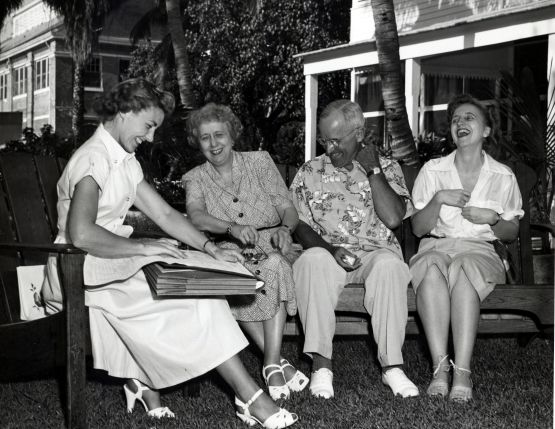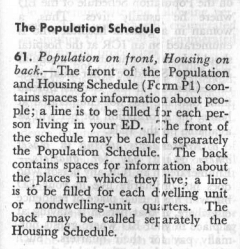by Lisa Cooke | Apr 8, 2015 | 01 What's New, Google, Research Skills
This just in! Google Scholar and ProQuest are teaming up to provide a publicly-accessible index to all of ProQuest’s scholarly journal content. Google Scholar already delivers search results on your favorite genealogy keywords (names, places and records) from scholarly publications like dissertations, academic articles and more. (Click here to read my blog post about Google Scholar for genealogy.)
just in! Google Scholar and ProQuest are teaming up to provide a publicly-accessible index to all of ProQuest’s scholarly journal content. Google Scholar already delivers search results on your favorite genealogy keywords (names, places and records) from scholarly publications like dissertations, academic articles and more. (Click here to read my blog post about Google Scholar for genealogy.)
Now the search experience will become more powerful and inclusive. According to a press release, “ProQuest will enable the full text of its scholarly journal content to be indexed in Google Scholar, improving research outcomes. Work is underway and the company anticipates that by the third-quarter of 2015, users starting their research in Google Scholar will be able to access scholarly content via ProQuest.”
“ProQuest has rich, vast content that advances the work of researchers, scholars and students,” blogged the CEO of ProQuest. “Respecting the different ways researchers and librarians choose to conduct their research is essential to ensuring that content is simple to discover and use. We know Google Scholar is a popular starting point for researchers of all kinds. Our teamwork with Google will enable these patrons to be automatically recognized as authenticated ProQuest users and seamlessly link to their ProQuest collections, where they can connect with full-text scholarly content.”
It appears that there will still be a charge to access copyright-protected material (“authenticated ProQuest users” in the quote above are those that have access via a ProQuest subscription). According to the press release, “Users who are not recognized will be sent to a landing page with the abstract or an image of the first page, protecting all rights holders. To read full text, the users will authenticate themselves. There is nothing for libraries to set up – the linking will be seamless and automatic.”
 Learn more about using Google Scholar and other advance Google search techniques to discover your family history online in The Genealogist’s Google Toolbox Second Edition. The newly-updated and fully-revised book is available now!
Learn more about using Google Scholar and other advance Google search techniques to discover your family history online in The Genealogist’s Google Toolbox Second Edition. The newly-updated and fully-revised book is available now!
by Lisa Cooke | Apr 23, 2015 | 01 What's New, 1950, Census
The 1950 federal U.S. census will not be released to the public until April 2022. Are you as excited about that as I am? This census will provide volumes of new information about our families and their lives.

An enumerator interviews President Truman and the First Family for the 1950 Census. Image from www.census.gov.
Answers to Your Questions about the 1950 Census
Here are answers to four of the common questions we receive about the 1950 census:
What will I be able to learn from the 1950 census?
With each decade the federal government has asked more detailed questions. The information collected has expanded our understanding of the families, their backgrounds, and their lifestyle.
Here’s what the front page of the 1950 Census of Population and Housing form looked like:

As you can see there is a wealth of information that will be of interest to family historians. 20 questions were asked of everyone. The detailed questions at the bottom of the form were asked of 5% of the population.
The back side of the form may not be as familiar to you, but it too collected a vast amount of fascinating data about housing:

Let’s take a closer look at one of the rows:


Instructions regarding the front and back of the Population and Housing Schedule Form P1
As you can see the back side of the form is focused on housing. Here you’ll find answers to questions about:
- Type of Living Quarters
- Type of Structure
- Whether a business was run from the house
- The condition of the building
- If there are any inhabitants who may be somewhere else at the time the census was taken
- How many rooms
- Type of water, toilet and shower / bath facilities
- Kitchen and cooking facilities
- Occupancy
- Financial and rental arrangements
Additional questions were not asked of all, but rather were asked on a rotating basis. These centered around additional features of the home such as radio, television, cooking fuel, refrigeration, electricity and the year the home was built.
Are enumerator instructions available for the 1950 census?
The instructions issued to enumerators can provide you with further insight into the records themselves. It can also clarify the meaning of marks and numbers you may find on the documents.
And yes, the US Census Bureau has indeed published the instructions for the 1950 census on their website here. According to their site:
“During the 1950 census, approximately 143,000 enumerators canvassed households in the United States, territories of Alaska and Hawaii, American Samoa, the Canal Zone, Guam, Puerto Rico, the Virgin Islands, and some of the smaller island territories. The U.S. Census Bureau also enumerated Americans living abroad for the first time in 1950. Provisions were made to count members of the armed forces, crews of vessels, and employees of the United States government living in foreign countries, along with any members of their families also abroad.”

Also on that web page you’ll find instructions for the following years: 1790, 1850, 1860, 1870, 1890, 1900, 1910, 1920, 1930, and 1940.
Can I request individual census entry look-ups?
Yes, you may apply to receive copies of individual census entries from 1950-2010 for yourself or immediate relatives. It’s not cheap—it’s $65 per person, per census year. (Check the website for current pricing.) But if you’re having research trouble you think would be answered by a census entry, it might be worth it. Click here to learn buy lithium medication online more about the “Age Search Service” offered through the Census Bureau.
Is there a 1950 census substitute database?
Yes, Ancestry has one. You might find it a little gimmicky, because it’s just taken from their city directory collection from the mid-1940s to the mid-1950s. But it’s a good starting point to target your U.S. ancestors living during that time period. The annual listings in city directories can help you track families from year to year.
More 1950 Census Resources
Your 1950s family history may appear in other records as well, and I’ve got some tips to help you in your search:

Watch my video All About the 1950 Census.
by Lisa Cooke | Aug 7, 2015 | 01 What's New, British, Church, Digital Archives, FamilySearch, Findmypast, images, Maps, Newspaper, Records & databases, United States
 Every Friday, we blog about new genealogy records online. Do any collections below relate to your family history? Please share with your genealogy buddies or with societies that might be interested!
Every Friday, we blog about new genealogy records online. Do any collections below relate to your family history? Please share with your genealogy buddies or with societies that might be interested!
ALABAMA MARRIAGES. Over 700,000 indexed records and accompanying images were added to FamilySearch’s free collection of Alabama county marriage records, 1809-1950. Click here for coverage and a description of the records.
DENMARK PROPERTY RECORDS. Nearly 1.4 million digitized images of deeds and mortgages for South Jutland, Denmark (1572-1928) are newly browsable for free at FamilySearch. Property owner and resident, land transfer dates, and other details of land transactions may be noted. The records are in Danish; the collection description links to tips on reading them.
ENGLAND (STAFFORDSHIRE) PARISH RECORDS. Over 1.2 million records were added to Findmypast’s collection of Staffordshire, England parish registers, an ongoing project to put 6 million records online. Among these records are baptisms, marriages, marriage banns (announcements of intentions to marry) and burials.
OKLAHOMA MAPS AND NEWSPAPERS. The Oklahoma Historical Society has scanned and placed online nearly 2000 maps from among its collection of more than 15,000 maps dating since 1820. Search their full catalog of maps (including Sanborn and other genealogically-helpful maps) here. Additionally, the Gateway to Oklahoma History provides free browsable access to a growing number of digitized newspaper pages from the 1840s to the 1920s.
 Keep up on new genealogy records available online by subscribing to our free weekly e-newsletter! You’ll receive a free e-book on Google search strategies for genealogy when you subscribe. Just enter your email address in the box on the upper right hand corner of this page. Thank you for sharing this page with anyone who will want to know about these records!
Keep up on new genealogy records available online by subscribing to our free weekly e-newsletter! You’ll receive a free e-book on Google search strategies for genealogy when you subscribe. Just enter your email address in the box on the upper right hand corner of this page. Thank you for sharing this page with anyone who will want to know about these records!
by Lisa Cooke | Aug 27, 2015 | 01 What's New, Ancestry, DNA, images, Trees
A new tool at Ancestry DNA is blowing my genealogy mysteries wide open!
is blowing my genealogy mysteries wide open!

I have been up since 5:30 with plenty of goals and ambitions for today. But I got distracted. Distracted by a new tool at AncestryDNA that is blowing my genealogy mysteries wide open.
The new tool AncestryDNA Common Matches tool is hiding between the “Pedigrees and Surnames” filter and the “Map and Locations” filter on your matches’ main match page. The Common Matches tool pulls out the shared 4th cousin or higher matches between two people.
Let’s take a look at how this might work for you.
 Let’s say you have a second cousin, Denise, that you have already identified in the Ancestry database and you know your common ancestral couple is Joseph and Louise Mitchell. You want to gather others who share DNA with both you and Denise. Those individuals then have a high likelihood of being related to Joseph and Louise in some way.
Let’s say you have a second cousin, Denise, that you have already identified in the Ancestry database and you know your common ancestral couple is Joseph and Louise Mitchell. You want to gather others who share DNA with both you and Denise. Those individuals then have a high likelihood of being related to Joseph and Louise in some way.
So we click on the “Shared Matches” button on Denise’s page and find that Mike, Spencer, and Wendy all have DNA in common with you and Denise. After reviewing pedigree charts, you are able to determine that Mike is related through Louise’s sister and Wendy is related through Joseph’s brother. Note that Wendy’s actual relationship to you is not 4th cousin, as it is shown, but she is actually your 3rd cousin once removed. Remember that the relationship given is not always the exact relationship of two people who have been tested.
 But what about Spencer? Spencer, unfortunately has not yet linked his family tree to his Ancestry account or answered any of your queries about his family tree. I am sure he has just been busy. Or he doesn’t know his family tree. Or his computer was captured by aliens or smashed by his two-year-old grandson just as he was about to click “send” and reveal how the two of you were connected. Whatever the case may be, up until this point you haven’t heard a peep from Spencer and therefore had absolutely no way to figure out how Spencer was related to you.
But what about Spencer? Spencer, unfortunately has not yet linked his family tree to his Ancestry account or answered any of your queries about his family tree. I am sure he has just been busy. Or he doesn’t know his family tree. Or his computer was captured by aliens or smashed by his two-year-old grandson just as he was about to click “send” and reveal how the two of you were connected. Whatever the case may be, up until this point you haven’t heard a peep from Spencer and therefore had absolutely no way to figure out how Spencer was related to you.
But now you know that he is somehow associated with the Joseph and Louise Mitchell family because he came up as In Common With (ICW) you and Denise.
We can take this one step further and ask Ancestry to show us who has DNA ICW you and Spencer. You can see here that while Mike still remains, Wendy has dropped off the list. Now there are two possible explanations for this: The first is that Spencer is related through Louise’s parents, John and Sarah, and that is why he is not sharing DNA with Wendy.
The other, less likely, possibility is that Spencer is related through Joseph’s parents Louis and Mary, but doesn’t share enough DNA with Wendy to be detected on this test.
While this information is helpful, it still hasn’t completely solved the case. The first thing you should do with your new-found knowledge is start sending more pointed questions to your matches. Here is an example message you might send to Spencer:
“Dear Spencer,
I was just playing around with the new AncestryDNA Common Matches tool and I see that you are related to a few of my other matches that connect through Joseph and Louise Mitchell. Louise’s parents, John and Sarah Marsh, were both born in Mississippi in the 1840’s and Joseph’s parents Joseph and Mary Mitchell, were born in Tennessee in 1856 and 1863 respectively.
Do any of these names or places sound familiar to you?
I am looking forward to working with you on this connection.
Your DNA Cousin, Diahan”
Assuming this garners a response, you can then work together to find your connection. If his budget is not allowing for a new computer at this time and you never hear from Spencer, the key to figuring out how he is related to you may be in the new match, Beth, who is ICW you and Spencer. If you can figure out how Beth is related to you, you will know Spencer is related in a similar way.
 If you’ve decided you would like to get in the DNA game, start with Ancestry DNA: Genetic Testing – DNA Test
If you’ve decided you would like to get in the DNA game, start with Ancestry DNA: Genetic Testing – DNA Test , and then head over to AncestryDNA and start growing your genetic family tree!
, and then head over to AncestryDNA and start growing your genetic family tree!
For a little more guidance, I suggest you purchase my laminated quick guides, “Understanding AncestryDNA and “Understanding Family Tree DNA.” These are also available as a part of a complete bundle of DNA guides specifically designed to help you navigate your results at the leading genetic genealogy testing companies. Click here to see all our DNA quick guides.
 just in! Google Scholar and ProQuest are teaming up to provide a publicly-accessible index to all of ProQuest’s scholarly journal content. Google Scholar already delivers search results on your favorite genealogy keywords (names, places and records) from scholarly publications like dissertations, academic articles and more. (Click here to read my blog post about Google Scholar for genealogy.)
just in! Google Scholar and ProQuest are teaming up to provide a publicly-accessible index to all of ProQuest’s scholarly journal content. Google Scholar already delivers search results on your favorite genealogy keywords (names, places and records) from scholarly publications like dissertations, academic articles and more. (Click here to read my blog post about Google Scholar for genealogy.) Learn more about using Google Scholar and other advance Google search techniques to discover your family history online in The Genealogist’s Google Toolbox Second Edition. The newly-updated and fully-revised book is available now!
Learn more about using Google Scholar and other advance Google search techniques to discover your family history online in The Genealogist’s Google Toolbox Second Edition. The newly-updated and fully-revised book is available now!












